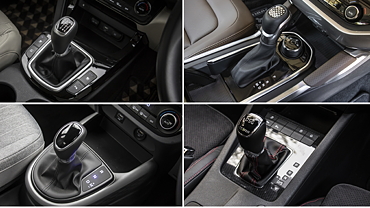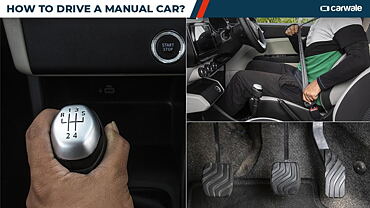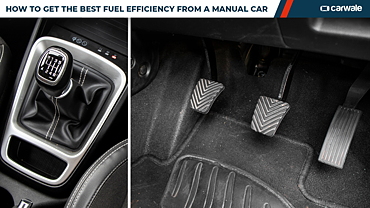
Every time I see a Maruti Suzuki Zen nowadays (which is becoming a rarity) I’m taken back to a winter afternoon in 2001 where a 14 year-old-me was sitting in the back of my aunt’s purple Zen, being taken to Sarvana Bhavan in Connaught Place, New Delhi. There were two indelible memories made that day- One is the moment I fell in love with Ghee roast Dosa and the other was my teenage mind comprehending for the first time that this was a car I wanted to own.
Yes, I had played many Need for Speeds, Test-Drives and possibly wasted a whole load of cash on Out-Run at the Sega arcade near my house. Each of them put me behind the wheel of European exotics with names so complicated my brain would probably age from saying their names. But when I truly understood what the Zen was, that day, none of those cars even mattered anymore.
Now, in all honesty, the last 177 words may seem like I want to settle down with the car, have little half-human-half-budget Maruti Suzuki children (call it if you will Centaurs meets Transformers) and probably retire when the car’s RC runs out for the third or fourth time but I assure you that’s not the case (legally, scientifically and ethically).
What this is instead is a little tribute to a car that made car buying a visual and sporty aspiration for the first time. Now, I’m not saying the M800 is bad looking but it's just that the Zen really raised the bar even compared to the original ‘Dinky’ that was made from 1983-1986.
Photo: Abhishek Chailha

In June 1993, Maruti Suzuki launched the Zen (Zero Engine Noise) in India. Positioned between the family-oriented M800 and the more premium 1000 sedan (which would eventually be replaced by the Esteem a year later) this was a car aimed at the newly liberalised working class aiming to spend their hard earned money on an aspiration.
Now globally, this car may have just been Alto but here in India it began creating the right kind of waves. It rose above the boxy appeal of the M800 but was small enough that it would still be easy for anyone to get behind the wheel. Nicknamed the Jellybean for its bouncy looks and easy to attract appeal, the Zen was an instant success.

It created an appeal for people to add alloy wheels, chunky tyres and of course GReddy and Bilstein stickers you know because ‘Scientific’ research points to an addition of 5bhp per sticker. A small cabin also meant that you didn’t have to spend a lifetime of savings on a very powerful music system to keep the beats banging. Jokes aside, it opened the door for individuality for the first time and that’s something the young Zen buyer lapped up hungrily.
Photo: Abhishek Chaliha

Of course, you can’t talk about the Zen and not mention its aluminium intensive water cooled 998cc four-cylinder engine. At 50bhp and around 70Nm it may not have been a rocket on wheels but compared to the long-in-the-tooth Premier Padmini’s 41.34bhp, it had a power-to-weight ratio of 65bhp per tonne. What’s more this engine was just 100cc off the Padmini’s motor. Even the smaller the M800 which at that time had been around for 10 years put out 56.92bhp per tonne making the Zen a much faster car. It was smooth, seemingly efficient and by the end of the car’s life producing 60bhp/78Nm which is about where today’s crop of 1.0-litre engine cars go about their business.

The Zen opened up a whole new world to auto enthusiasts who saw potential in this bubbly little hatchback to go fast around corners. Racers modified it, boosted the horsepower, stiffened the handling and progressively went faster and faster around corners. It became a popular autocross tool and even set some foundation for a certain Mr Gaurav Gill to make his mark on the Indian racing fraternity.
Of late, the Zen has come into the fore again thanks to it being a popular choice among drag racers and as we discovered last year, the potential to modify the Zen for drag racing is immense. We have covered this racing culture in a feature called Énter the Drag-Zen’ when we attended Valley Run 2017.

In its 13 years, the Zen spawned design changes, engine updates and even an AT version. And among these, the biggest hits were the limited-edition two door models. We’ve never been kind to two-door cars that have useable back seats but we managed to make an exception for the Zen Carbon and Zen Steel. With their funky 13-inch alloy wheels and stand out design, they are prized collector items in the Indian car scene.

On the flip side, we do have to mention the rather ugly looking Zen classic as well as the Zen Estilo. One had looks only a mother could love while the other didn’t deserve the Zen tag…..Nuff..said!

Now from the way things are going, everyone wants SUVs and honestly if Maruti Suzuki did name the Future S concept with the Zen tag, it wouldn’t be such a bad thing. But in our minds and hearts the Zen will always be everything that we’ve said in this story and now that it’s hit 25, the car is well on its way to becoming India’s first modern vintage.





